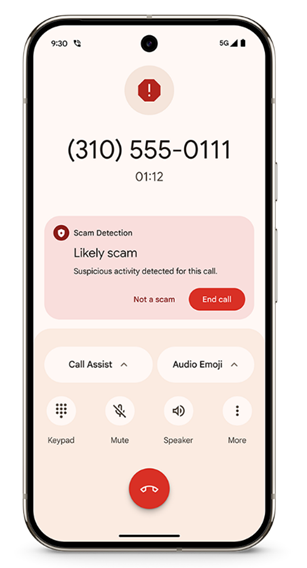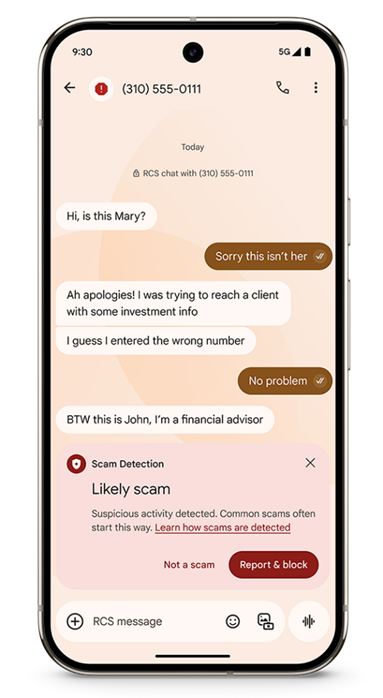
Scam Detection in Calls (Google)
Google is expanding the deployment of its advanced AI-driven fraud detection tools to protect Android users from increasingly sophisticated phone scams and SMS-based attacks.
The company emphasizes that these measures were introduced in response to AI-powered fraud campaigns, which, according to the Global Anti-Scam Alliance, have already inflicted losses exceeding $1 trillion. The new features are designed to combat so-called conversational scams, which begin innocuously but gradually manipulate victims into precarious situations.
Google highlights the growing prevalence of text-based scams, where initial messages appear harmless, only for cybercriminals to employ psychological manipulation to extract money or personal data. Additionally, fraudsters are increasingly leveraging number spoofing to impersonate trusted organizations.
Until now, Android’s anti-spam defenses primarily focused on blocking threats before any interaction could occur. However, scammers have adapted by devising schemes that become perilous during the course of communication. In response, Google has integrated AI models capable of monitoring suspicious behavioral patterns in real time, alerting users to potential risks.
One of the key innovations is the Message Protection feature, which enhances existing spam defenses by identifying fraudulent schemes on a deeper level. The system now analyzes SMS, MMS, and RCS messages, detecting suspicious patterns. If a message is flagged as potentially harmful, the user will receive a warning and have the option to block or report the sender.
The Scam Detection feature in Google Messages is enabled by default but applies only to conversations with unknown numbers. All data is processed locally, ensuring that messages are not transmitted to Google’s servers. If a user reports a scam, only sender information and a limited number of recent messages are shared with Google. The feature is currently available in the U.S., the U.K., and Canada in English, with plans for expansion to additional regions.

Another significant enhancement is fraud protection for phone calls. This technology analyzes conversations in real time, identifying signs of fraudulent activity. For instance, if the caller requests payment via gift cards, the system alerts the user through an audible warning, vibration, and an on-screen notification.
During beta testing, machine learning models were optimized for different generations of devices. The Pixel 9 utilizes the advanced Gemini Nano model, while Pixel 6 and newer devices run a more compact AI model. Tests revealed that Gemini Nano delivered the most accurate results, prompting Google to extend its functionality to all Pixel 9+ users.
As with message protection, all call processing occurs locally. Audio recordings are neither stored nor shared with third parties. Due to potential privacy concerns, Scam Detection for calls is disabled by default, but users can activate it manually in the Phone app settings. Furthermore, even when enabled, the feature can be deactivated for specific calls. If active, an audio signal will notify both parties that the system is monitoring for fraudulent activity.

